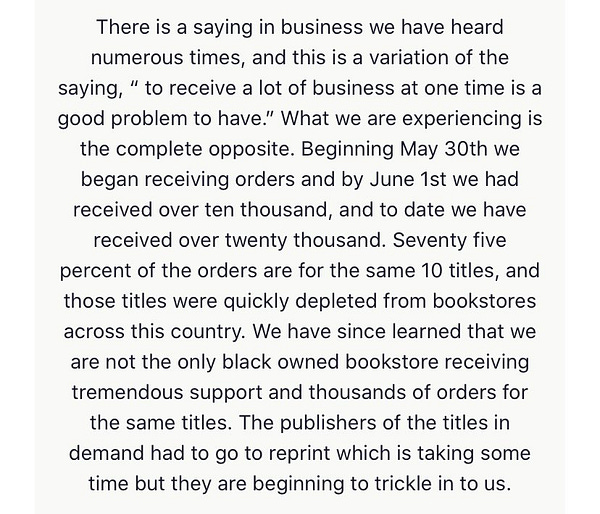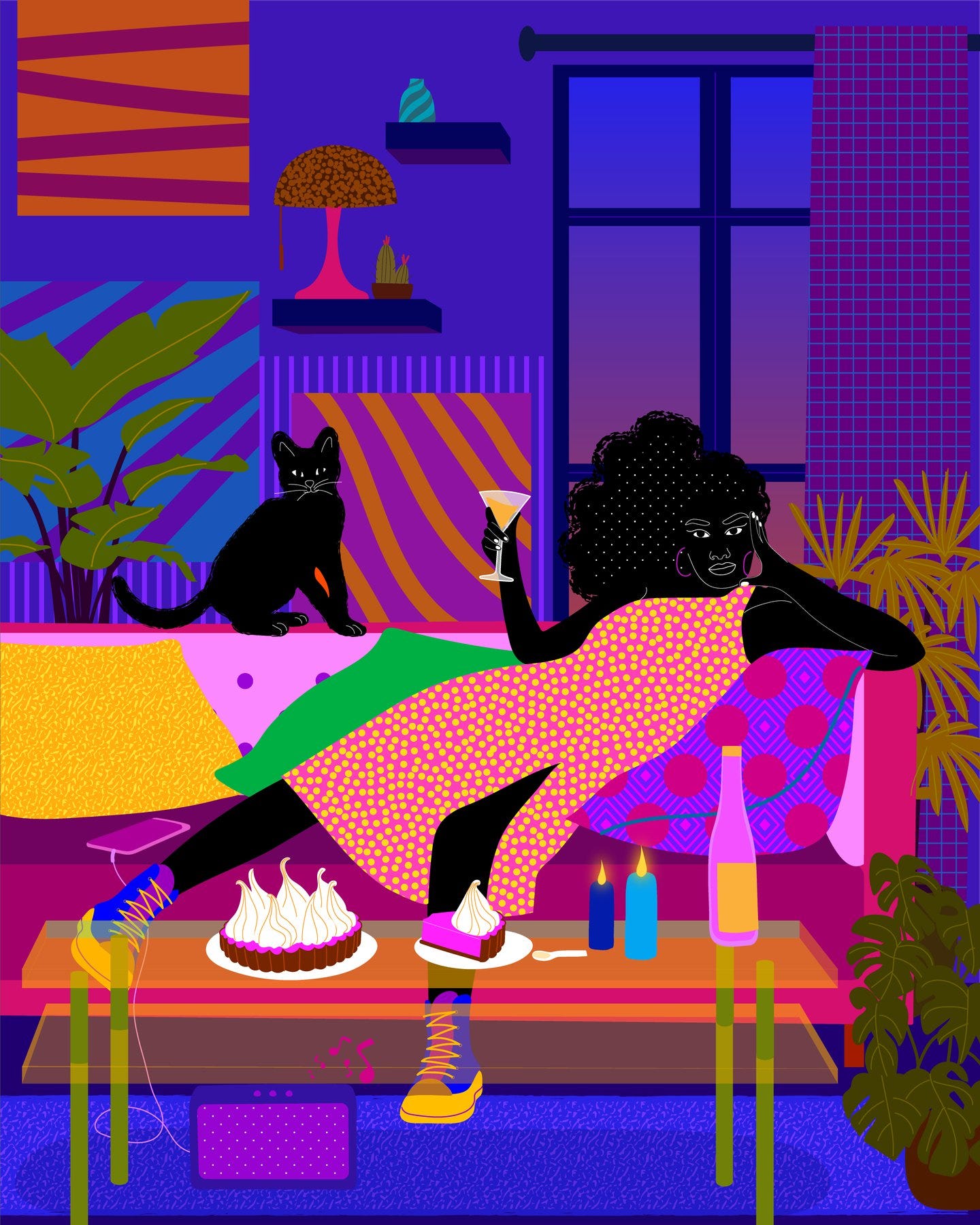Welcome to The Curtain, a weekly newsletter exploring arts, culture and the future. It’s written by me, Gus Cuddy.
New reader? Subscribe for free:
Hey all,
Hope you’re having a great week.
Recently I discussed the power of thinking bottom-up, especially in these tough times. I meant that mainly as a framework of thinking about productivity and learning as emerging organically, rather than being forced. Here's what I wrote:
We need to be quick on our feet, and the best way to do this is by starting from the bottom up. Starting from the bottom up means allowing yourself the freedom to tinker in the direction that’s most interesting to you—and allowing that direction to change. It’s OK to leave the end vision hazy because it’s going to change a lot, and you’re probably never going to get there—and if you do, it’s not going to be exactly what we imagined.
But I’ve come to believe that bottom-up thinking is more than what I wrote then: it's an entire worldview that can change the world, as we're seeing now.
Revolution always starts from the streets, never from above. Movements emerge organically, rather than being manufactured in a laboratory. Protests are, by definition, bottom-up; they may influence top-down actions—such as changes to budgets—but the swell of change comes from mounting pressure from underneath.
In other words, patterns at the micro level begin to be reflected on the macro level. The same is true in nature: the same spirals are found in fingerprints, in shells, in the earth, and the cosmos. Activist adrienne maree brown calls this "Emergent Strategy", or "how we intentionally change in ways that grow our capacity to embody the just and liberated worlds we long for." She writes:
How we are at the small scale is how we are at the large scale. The patterns of the universe repeat at scale. There is a structural echo that suggests two things: one, that there are shapes and patterns fundamental to our universe, and two, that what we practice at a small scale can reverberate to the largest scale.

in other words: fractals
What starts small can transform the world. But it's important to remember that this isn't an individualist, rags-to-riches, or "pull yourself up by your bootstraps" narrative. Inherent in movements emerging from the bottom is the idea of collective action. One person is not autocratically making decisions from an arbitrary position of power. Likewise, it's easy for us, when narrativizing, to look for an individual or hero to be our guiding force, especially amidst the messiness of social movements. But the framing of history as a story of individuals is dangerous—as Angela Davis notes in Freedom Is a Constant Struggle, it takes away from the hope and power of collective action in the face of struggle, and falls into a trope of individualist capitalism:
Progressive struggles—whether they are focused on racism, repression, poverty, or other issues—are doomed to fail if they do not also attempt to develop a consciousness of the insidious promotion of capitalist individualism. Even as Nelson Mandela always insisted that his accomplishments were collective, always also achieved by the men and women who were his comrades, the media attempted to sanctify him as a heroic individual. A similar process has attempted to disassociate Dr. Martin Luther King Jr. from the vast numbers of women and men who constituted the very heart of the mid-twentieth-century US freedom movement. It is essential to resist the depiction of history as the work of heroic individuals in order for people today to recognize their potential agency as a part of an ever-expanding community of struggle.
Hearing about a singular savior, in effect, could reduce our perceived influence in being part of a community—and united communities are more powerful than we can imagine.
But communities start locally, and they need to actually reflect intentional change that embodies “the just and liberated worlds we long for”, so that their patterns can triangulate upwards. Like in nature, what’s small is all. By extending this metaphor, we begin to see how creating change on the smallest level can begin to ripple out. Grassroots organizing starts in small, local circles, creating direct action for the community. Many organizers around the country and world doing this creates overlapping fractals that start to multiply and spiral up change.
We can also see why, for organizations, change needs to be reflected on the most immediate level first: internally. How many large organizations do we see that talk a big talk, but amidst their internal processes and hiring practices perpetuate the same traumas and problems that they talk about eradicating? Theaters are an easy target here, but the truth is that this exists in many, many industries. Two-dimensional racism in casting exists because whiteness is the default mode for so many theaters’ thinking processes and internal staff. Theatre also maintains a culture of overwork, burnout, and underpay, internal practices that swallow artistic energy, and dampen the meaning of community engagement. The work of greater change, then, starts by first looking inwards and re-examining what harmful practices we perpetuate on an immediate, local level: personally, interpersonally, and organizationally.
Part of me also wonders if some of these larger organizations and institutions are beyond saving. If their racist, patriarchal, top-down hierarchies mean that the change that would need to happen is so immense, so overwhelming as to make it nearly impossible to reconstruct themselves into a new organization entirely. I don’t know if that’s too cynical. But I do know that, if we want real change, these organizations need to do some deep re-thinking of their internal structures and their external actions.
The future, though, favors collectives that emerge organically, enacting the change they want to see at the most immediate level. From the small, local scale comes greater and greater complexity as these patterns expand to take on the whole world. The struggle we see happening in America right now is an infinitely complex one, built off of organizers starting from the bottom-up. Likewise, when arts emerge with these same collective interests in mind, the world will turn out a better, more just place.
📝 Notes From the Week
Tracking Theaters’ Responses and Demographics
What started as a spreadsheet to track American Theaters that released statements regarding the protests has involved into an impressively detailed database tracking city demographics, theatre staff and board makeup, and more. If you’re interested in seeing some data on the state of American theaters right now, I recommend checking it out.
The Flea is going to start paying its artists
An example of collective action starting small and rippling out: after a public letter online, The Flea—famous for not paying any of its young acting company—has decided to pause and reconsider both its financial practices and its perpetuation of racism and sexism.
“The Flea must reckon with the intersection of racism, sexism and pay inequity, and we must properly address grievances expressed by members of our community,” leaders of the theater wrote in a statement signed by its producing director, Carol Ostrow, and its artistic director, Niegel Smith.
“We are pausing all production activity to reflect on the misalignment of our values and actions and to transform our institutional culture and producing model,” said the statement, which was released on Thursday.
How Liberal Arts Theatre Programs Are Failing Their Students of Color
Great piece from Miranda Haymon, explaining the problem of white liberal arts institutions’ very white theatre programs.
On top of that, though, in both cases I was expected to provide a semester-long solution for a generational, institutional failure, and I had 25 percent less rehearsal and preparation time than expected, added emotional exhaustion, and pressure on me to make sure the production turned out okay. More than anything, I felt the need to show up for the young theatre artists of color who were thrilled that I was there, come to save them from their all-white departments.
The white fragility of White Fragility buyers





Bill Simmons and The Ringer are not looking good right now
What used to be one of my favorite websites has recently, and rightfully, come under a lot of fire for their lack of diversity, and the toxic white maleness of their lead podcasters Simmons and Ryen Russillo. The movie podcast The Rewatchables, which used to have a rotating and somewhat diverse set of guests, has now just become three white dudes talking about movies made by white dudes that they like. Former staffers of color reveal they left because of a lack of diversity. Meanwhile, Simmons saying “this isn’t open-mic night” in response to it all is just tone-deaf.
The Last of Us Part 2 is Either the Best Video Game Ever Made or An Unnecessary Slog through a Commentary on the Cycle of Violence
The Last of Us was pretty much the last video game I ever really played, and the ending still sticks with me to this day. Finally, after many years of delays, the second part is coming out. But depending on who you read, it’s either a dark, form-advancing masterpiece and “one of the best games ever made”, or a tired, clichéd, and dated commentary on the cycle of violence.
Some great pieces on Juneteenth
To return to Ira Berlin — who tackled this subject in “The Long Emancipation: The Demise of Slavery in the United States” — it is useful to look at the end of slavery as “a near-century-long process” rather than “the work of a moment, even if that moment was a great civil war.” Those in bondage were part of this process at every step of the way, from resistance and rebellion to escape, which gave them the chance, as free blacks, to weigh directly on the politics of slavery.
Annette Gordon-Reed, who discusses growing up in Texas, the words of Thomas Jefferson, and an absolutely disgusting white supremacist speech from the Vice President of the Confederacy.
Jelani Cobb, on Juneteenth as a counterpoint to the Fourth of July:
The fact that slaveholders extracted thirty additional months of uncompensated labor from people who had been bought, sold, and worked to exhaustion, like livestock, throughout their lives is cause for mourning, not celebration. In honoring that moment, we should recognize a moral at the heart of that day in Galveston and in the entirety of American life: there is a vast chasm between the concept of freedom inscribed on paper and the reality of freedom in our lives.
End Note

art by Aurélia Durand
++
That’s all for this week. Thanks so much for reading.
The best way to support my work is is to forward this email to someone else you think would enjoy it.
You can subscribe for free here, if you haven’t already:
And you can reply directly to this email and I’ll receive it. I’d love to talk more!
See you next week!
-Gus



